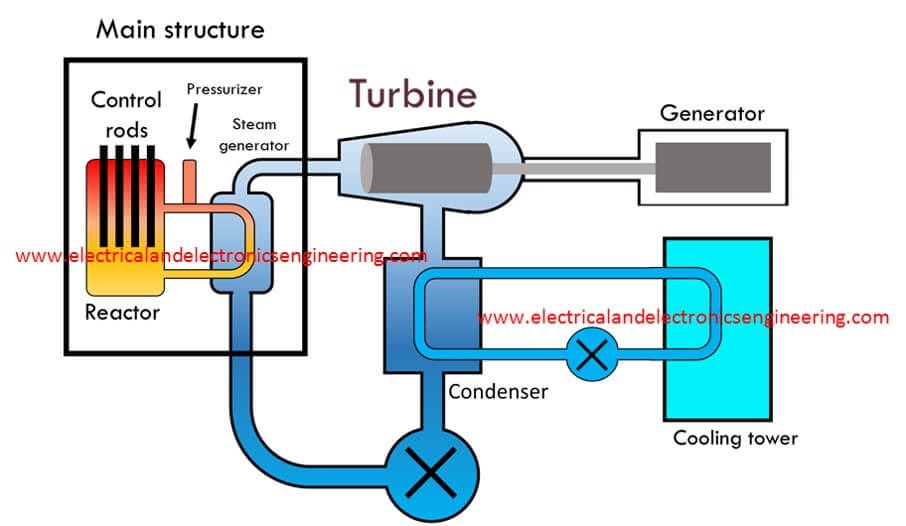A nuclear power plant converts electrical energy into nuclear energy.
Basic Working
In a nuclear power station, Uranium is subjected to the fission process in the reactor. The heat energy produced is utilized for producing steam at high temperature. The steam is then moved to the steam turbine which produces mechanical energy at its output.
The turbine is synchronized with the alternator (synchronous generator) which produces electricity at its output.
Schematic Arrangement of Nuclear Power Station
A nuclear power station contains five major components:
- Reactor
- Steam generator
- Turbine
- Generator
- Condenser

Reactor
A nuclear reactor is the main portion of the nuclear power station where the nuclear fuel is subjected to fission reaction. A large amount of heat energy generated by nuclear fission is moved to the steam generator section. The heat generated in nuclear reaction never comes in direct contact rather it stays separate.
Steam generation Section
In a steam generation, section water is provided from the bottom. The heat from the reactor converts this water into steam which exits from the top of the steam generation section.
Steam Turbine
The heat from the steam generation section moves to the steam turbine which causes the turbine to rotate.
Alternator
The steam turbine is synchronized with the alternator which produces electrical energy at its output.
Condenser
After obtaining useful work from the steam it is then moved to the condenser section. Here the steam is condensed back to water and is again fed to heat exchanger section.
So that was all about basic working and schematic arrangement of the nuclear power station. The actual construction and working of real-life station or somewhat more complex and different as illustrated here.
